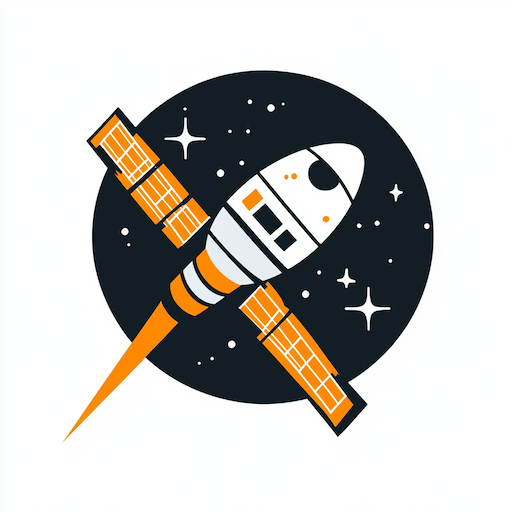- Bittensor leverages blockchain technology to create a decentralized network of AI models, promoting collective learning and innovation without centralized control.
- The Yuma Consensus involves miners deploying and validators verifying AI models, ensuring high-quality outputs and fostering an ecosystem where successful models are rewarded.
- The TAO token is key to Bittensor’s economy, enabling transactions and aligning participants, with sustainable value mechanisms inspired by Bitcoin.
- Bittensor’s subnet architecture supports diverse AI tasks, encouraging specialized innovation and serving as a dynamic platform for AI advancements.
- Bittensor aims to democratize AI, challenging centralized AI giants by championing transparency, privacy, and a decentralized approach to digital power dynamics.
- By pioneering decentralized AI, Bittensor represents a movement towards reclaiming control and fostering open innovation in AI development.
Bittensor is reimagining the future of artificial intelligence. Imagine a vast network of AI models, each learning from one another, guided not by any single organization’s whims but by collective incentives embedded deep in blockchain technology. This isn’t a science fiction novel; it’s Bittensor’s innovative reality. With its ambition to rival the centralized AI giants, Bittensor offers a promising blueprint for a more equitable digital future.
Amid ever-increasing concerns over data ownership and centralized AI monopolies, Bittensor’s significance is even more pronounced. By leveraging blockchain’s transparency and immutability, it offers a decentralized alternative that safeguards against the pitfalls of centralized control.
At Bittensor’s heart lies the Yuma Consensus, a brilliant orchestration of miners and validators competing and verifying AI model contributions. These participants are crucial components of the network, where miners deploy AI models that digest and produce knowledge, and validators ensure these models generate high-quality, verifiable outputs. As the efficiency and accuracy of these models improve, so does their reward potential within the system. It’s an ecosystem where only the fittest—by sheer merit—thrive, reminiscent of nature’s relentless evolution.
Essential to the functioning of Bittensor is the TAO token, an economic lifeline facilitating everything from registration to model evaluations. TAO’s intrinsic value grows as its ecosystem thrives, fueling activities and aligning participants towards a common goal of fostering groundbreaking AI solutions. This tokenomics structure borrows deeply from Bitcoin’s capped supply and halving events, ensuring value sustainability across the network’s timeline.
Crucially, Bittensor’s layered subnet architecture sees diverse AI tasks, from text generation to the marvels of autonomous DeFi yield farming, slotting into Bittensor’s ever-evolving landscape. Here, “mini-networks,” or subnets, cater to specific AI functions, driving specialized innovation and creating a dynamic laboratory for AI advancement.
What Bittensor champions goes beyond technical innovation; it’s about reconstructing power dynamics in digital technology. In a landscape dominated by a few titans, decentralized AI has the potential to democratize information access and innovation. With its impressive strategy, Bittensor might just set the precedent for re-imagining what AI—a discipline predicated on shared information—should look like.
Embarking on such a decentralized endeavor with Bittensor is, in essence, a step toward reclaiming control, privacy, and innovation. As mainstream AI grows more opaque, the clarity and openness promised by decentralized networks become increasingly attractive. Bittensor thus stands at the forefront, challenging the status quo, and championing a new dawn where AI answers not to a single entity but to a universal, and inherently more democratic, protocol. In essence, it’s more than just a network—it’s a movement.
Unveiling Bittensor: The Future of AI Evolution Powered by Blockchain
Understanding Bittensor’s Revolutionary AI Network
Bittensor is redefining the landscape of artificial intelligence by creating a decentralized network of AI models that learn from one another through a blockchain-based system. This ecosystem aims to shift power dynamics away from centralized AI giants, offering a more transparent and equitable digital future. Here’s a deeper look into how Bittensor operates and what it promises.
How Bittensor Works: Key Components and Mechanisms
– Yuma Consensus: The backbone of Bittensor’s network, where miners and validators play essential roles. Miners deploy AI models that process and produce knowledge, while validators ensure these outputs are high-quality. This environment ensures only the best-performing models thrive, fostering a meritocratic AI evolution.
– TAO Token: The lifeblood of the Bittensor ecosystem, essential for various functions within the network. The TAO token facilitates model registration, evaluation, and incentivization. By adopting Bitcoin-like capped supply and halving events, it ensures a sustainable value trajectory.
– Layered Subnet Architecture: Diverse AI tasks, from text generation to autonomous decentralized finance (DeFi) yield farming, are handled by Bittensor’s subnets. These “mini-networks” focus on specific AI functions, spurring specialized innovation in a continuously evolving landscape.
Real-World Applications and Use Cases
– Decentralized AI Development: By decentralizing AI model creation and evaluation, Bittensor levels the playing field, enabling smaller entities and individuals to contribute to AI advancements without being overshadowed by tech giants.
– Enhanced Data Privacy: With a focus on transparency, Bittensor minimizes risks associated with centralized data control, offering users greater ownership over their data.
– AI-Powered DeFi: Bittensor’s influence extends to financial technologies by integrating AI-driven decision-making into decentralized finance, potentially revolutionizing prediction markets and risk management.
Pros and Cons Overview
Pros:
– Decentralization: Reduces monopoly, fostering wider participation.
– Merit-Based Reward System: Encourages innovation by rewarding effective models.
– Enhanced Security and Transparency: Leveraging blockchain’s immutable ledger.
Cons:
– Complexity: The decentralized system may pose a steep learning curve for new participants.
– Scalability Challenges: Managing large-scale participation without sacrificing performance.
Market Forecast and Industry Trends
With growing concerns over data privacy and control, the trend towards decentralized networks like Bittensor is anticipated to rise. As blockchain technology matures, decentralized AI networks could become mainstream, challenging existing power structures in tech.
FAQs About Bittensor
What differentiates Bittensor from other AI models?
Bittensor leverages blockchain to create a decentralized, collaborative network where AI models learn from each other, governed by a merit-based system rather than centralized control.
How does TAO tokenomics benefit participants?
The TAO token’s value grows with network improvements, rewarding participants who contribute effectively, thus aligning individual incentives with the ecosystem’s growth.
Is Bittensor suitable for large enterprises?
Yes, particularly those interested in maintaining competitive advantages while respecting data privacy and without relying solely on tech giants.
Actionable Recommendations
1. Educate Yourself: Understand blockchain principles and decentralized AI concepts to participate effectively in Bittensor.
2. Explore Opportunities: For developers, diving into Bittensor’s ecosystem can offer new avenues for innovation and collaboration.
3. Stay Updated: Follow Bittensor’s developments to leverage emerging trends in decentralized AI.
For more details, visit the Bittensor website and become part of the AI future.











